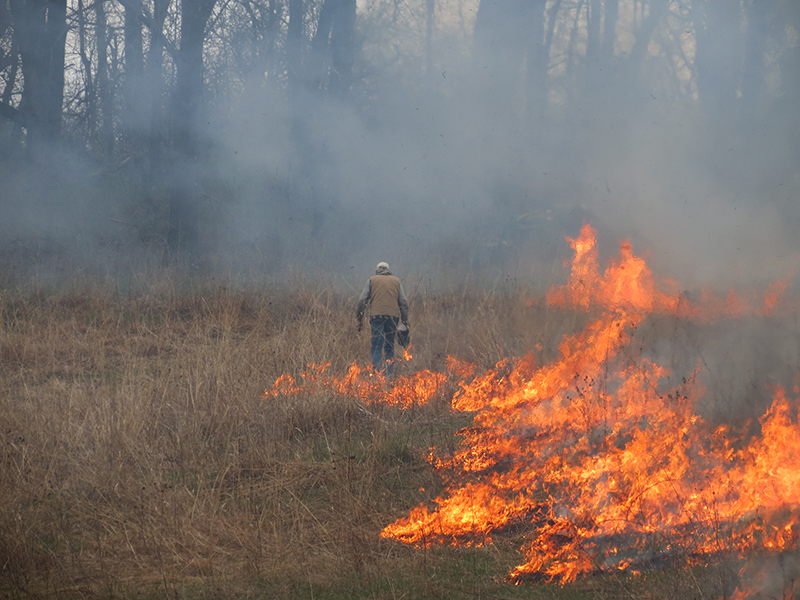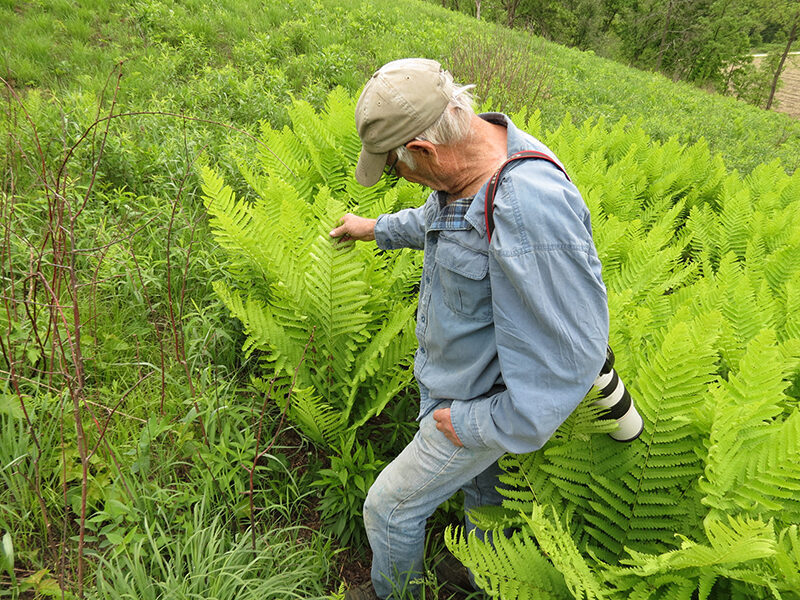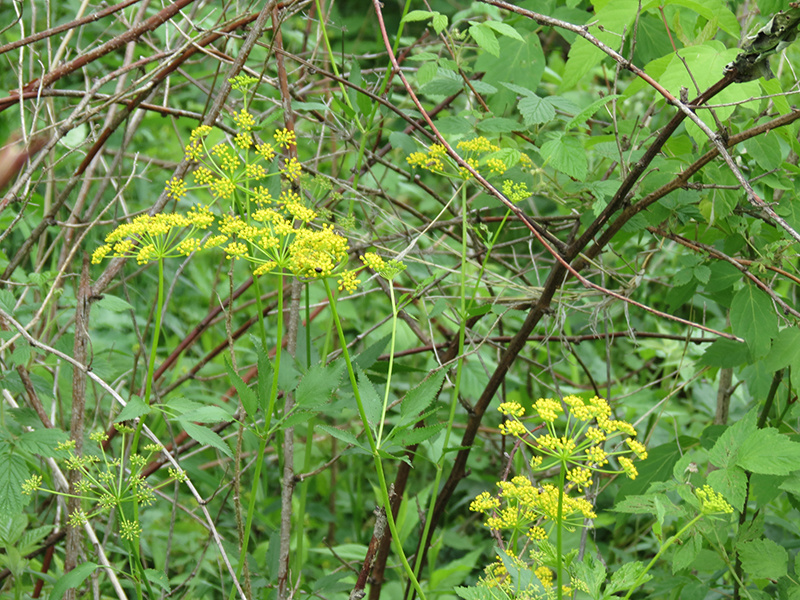
Ancient Prairie in Wisconsin

Thirteen acres of lush green hillside meadow, tucked away in a cool and quiet valley. What a perfect place to spend a Sunday afternoon, slowly stepping along, through a shin-high diversity of native prairie plants. I am in total awe. This rare gem of property has survived for thousands of years—and more incredible, it survived the farm landscape transformation of European settlers.

My life-long friend and one of The Prairie Enthusiasts* (TPE) founders, Gary Eldred, and I are taking a quick survey of the prairie (now owned and protected by TPE), a month after we executed a prescribed burn here together in late April. The fire had done its job; the native prairie plants are showing their many colors of green, with some already sporting pretty flowers.

After an hour or so, I realized I’d been smiling all the while. Between the two of us we talked almost non-stop as we discovered each species that was not yet in bloom. Gary has the eye of a hawk and can identify each plant regardless of how small it is. He wants to know what other rare prairie species might show up after so many years without its greatest ally, fire. The Iris Drive Prairie (in southwest Wisconsin, near Gays Mills) is truly one of nature’s rarest survivors.
Gary is rightfully proud of this forgotten land that he’d discovered just a few years earlier—an “L”-shaped plot that had for reasons unknown escaped the oblivion suffered by essentially all of the millions of acres of tallgrass prairie that once covered the continent’s mid-section. If it wasn’t for Gary’s hawk-eye and constant dedication, I wouldn’t have been smiling all afternoon. Following are pictures of some of the plants we found in Iris Drive Prairie.
After all our thrilled chatter about prairie plants, our conversation turned to the topic of invasive species—not the ones already in this prairie, but the new ones that are beginning to show up along the side of the dead-end gravel road. Poison parsnip and garlic mustard are the latest homesteaders to threaten Iris Drive Prairie.
We agreed it would make a difference if the county roadside mowing crews understood that their rotary mowers were spreading the seed of a marauding hoard of invasive species. Would they stop mowing if they knew their actions were threatening one of the rarest meadows in North America? Sure would be helpful! And it’s not so much about the mowing itself; it’s about how it’s executed. When sickle mowers once were used to cut roadsides throughout the state, it cut vegetation just above the ground and laid the plants (and their seeds) flat on the ground.
The rotary mower on the other hand cuts the plants to shreds, disturbing and dispersing the seeds in every direction. Masses of seeds cling to the underside of the mower deck and are periodically dislodged by stones or litter to take root farther down the road. The tread on the tractor tires breaks the soil, providing a perfect growing bed for the aggressive seeds. Over and over again.
I know that complaining won’t help matters, but calm, common-sense conversation can sometimes lead to understanding. So can a good story.
Naturally Yours,
Dan








